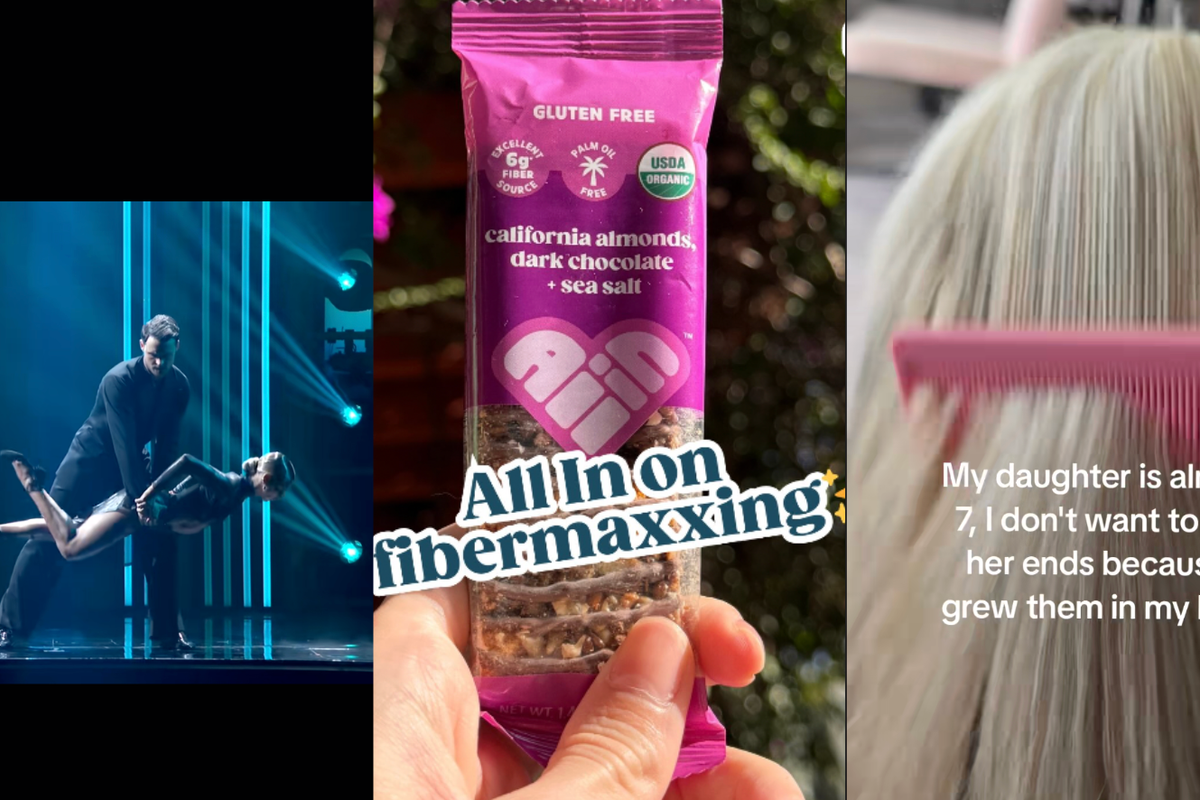Life is complicated. It’s so easy to get overwhelmed with work, family, and that phone in your pocket that keeps buzzing and beeping at you constantly. To try to cut through the noise and free ourselves from being bogged down by a never-ending list of to-dos, we all have the little things we do to make life a bit easier; we call ‘em life hacks.
The great thing about social media is that when people aren’t busy arguing with one another, we can come together and share the little tricks we know that help make life a bit easier. The term "life hacks" was coined by tech journalist Danny O’Brien at the O'Reilly Emerging Technology Conference in San Diego, California, in 2004, to describe the "embarrassing" scripts and shortcuts productive IT professionals use to get their work done.
Recently, a Redditor posed a question to the AskReddit subforum, asking people to share the “I can’t believe other people don’t do this” hacks they use to make life a bit easier. The responses ranged from tips for finding the perfect Christmas gifts to clever ways to be more efficient at the computer. For anyone who’s dealing with anxiety or depression, the 5-minute rule seems like a great way to make an improvement to your mental health.
Here are 17 life hacks that people “can’t believe” other people don’t do
1. Clipboard history
"Windows + V for clipboard history. I showed a coworker this last week and he looked at me like I invented fire."
2. Emergency gifts
"If I'm invited to a Christmas party where I have gifts for some friends, I wrap 2 boxes of chocolates and attach a blank name tag so that if I receive a gift from someone unexpectedly, I can quickly scribble their name and it looks like I had a gift for them the whole time. If I don't have to deploy the tactical choc, then I have a nice treat for January."
"My Nana kept a box of blank birthday /anniversary /Christmas cards in her closet for this reason. People used to pop 'round more back then and she'd always be prepared, just in case."
3. Map your vacation
"When planning a trip, create a list in Google Maps and add everything you might want to do (after researching on Reddit, TripAdvisor, Atlas Obscura, etc.) It’ll allow you to see a bird’s eye visual of what’s near each other so you can group things and have an easier time planning your days."
"I have several folders in Google maps for food, activities and cool places, even in cities I can’t visit rn. This way, if I ever get to go to, say, London, I already have a list of places I have seen or heard of and I don’t have to do so much planning. Super useful for weekends when you don’t have plans, I bring out the map and see what’s nearby."
4. Gift idea list
"Keep a running note of gift ideas for your loved ones, year round. When holidays, birthdays, etc. roll around, it's a lifesaver. Keep another note of TV shows, movies, books, music, games, whatever else you want to get to when you have time, and where to find them (if applicable). The next time you have spare time and can't think of what to watch/read/do, go to your list. Put days that matter to your loved ones in your calendar. Not just birthdays and stuff like that-- anniversaries of loved one's passings. Sober birthdays. Milestones. Make a point of reaching out on those days."
"Also, buy the Christmas/birthday gifts WHEN you see them, year-round. Less of a single big-hitter bill at Christmas, plus you don't have to remember where you saw that thing or if it will still be available when you return. Super helpful for those forgotten holidays, too. Did you forget to buy a Mother's Day gift and you need to leave in 15 minutes? Grab one of the stashed gifts!"
5. Create a photo warranty file
"When you buy a thing that has a warranty, take a picture of the receipt with your phone. Then store the picture in a dedicated warranty folder. Lastly, rename the receipt YYYY-MM-DD ITEMNAME, where the date is the warranty's expiration date. Now you have all your warranties easily accessible, and you can sort them by date."
"And/or, tape it to the back of the thing. Large appliances, TVs, stuff like that, you’ll never see the back, and it won’t get lost."
6. Buy multiple phone chargers
"Invest in multiple phone chargers. I have one by my bed, in the living room, my home office, and my car. None of them is ever to be moved. The lone exception is the fifth charger, which I keep in my travel bag along with a power bank. Haven't seen my battery go below 20% in years."
7. The stress question
"When I’m stressed, I ask myself: ‘Will this matter in 5 years?’ 90% of the time, the answer is no."
"And for many things, that timespan can be months, weeks, or days. Stress has a bad way of making every difficult situation seem permanent."
8. Microwave corn
"Microwave full ears of corn, husk on. 3:30-4 mins. It steams itself in the husk. Then cut the base/stem off (with about the first little bit of corn closest to the base), pick it up by the top/silk, and the whole cob falls right out. All the silk stays with the husk. Corn is more snappy than boiled. Not mushy at all. And you don't have to mess with de-husking or waiting forever for a huge pot of water to boil. The first time you cut it right and the ear drops out of the husk is pretty satisfying."
9. Start small
"If you're depressed and struggling with getting a grip on life in general. Start small, like clean out a drawer or clear a small area, and then the next day do something else, and eventually you'll notice that you're able to manage the bigger tasks because the small ones are already done."
"I started with making my bed and eventually just making sure my room is always tidy. When I came home and felt shitty, it would always be to a peaceful, pleasant space, and it was one less thing I had to get done when I wasn't in the mood to do shit."
"I'll add to this, and say downsizing too. I had so much "stuff". I felt like I gained headspace after donating/removing a lot of things I could live without. I've done almost 5 trash bags worth this year."
10. Start the night before
"Prepare for your morning the night before. Whether it is for your usual morning routine or a one-off event, lay out everything you will need before retiring to bed so you barely need to think in the morning. Not only is it more relaxing, but your mind will also have the time to think of other small details you may have forgotten."
"I can't understand how anyone who gets up and has to go to work in the morning can go to sleep without having EVERYTHING ready to go before they go to bed. Clothes. Lunch. Work-related items. There's no way I sleep thinking, 'what am I going to wear? Do I have enough bread to make a sandwich? Where exactly did I place the reports I have to have for work?' All I's must be dotted, and all T's must be crossed before I hit the sack."
11. No big deals
"Do not make a big deal of anything that accidentally spills or breaks in your house. Example: Spilling water at the dinner table. The calm reaction eliminates the usual stress episode. It's a great approach with kids."
12. 5-minute rule
"If something can be done in less than five minutes, do it right away, or if it takes longer, set a timer for 5-10 minutes and just start. I apply this mostly to cleaning because I don't like doing dishes or sweeping the kitchen floor lol."
13. Make post-meal clean-up easy
"As soon as the food is plated- literally, the second the chili is scooped or the lasagna is served- I fill every single used pot or pan with scalding hot water and a squirt of dish soap. Why torture your future self?"
"I do something similar. We have a dish brush in the sink, and the second I serve up, I run the water and use the brush to give it a quick wipe… no more dried on food!"
14. Send text later
"Send text later function on iPhone has helped me a lot. I’m an early riser and often think, 'Oh, so and so’s birthday, text them later,' or 'text coworker about xyz,' but I don’t want to text them at 430am. I sent the “text later” function for 9 am or whatever a reasonable hour is. Has saved my forgetful but thoughtful head a lot."
"My daughter is a little flighty, and she has violin lessons once a week, so that morning I always schedule a message to be sent the last ten minutes of her school day, reminding her to bring her violin home from school!"
15. Stock up on socks
"For my everyday wear, I bought a couple of multi-packs each of identical gray & black socks so I don't have to spend time matching them up. When one gets a hole, I can toss it & still have a mate."
"Every couple of years, replace all socks with a dozen or so identical fresh pairs of really nice ones. Socks generally aren't so expensive that this will be a huge cost over time. You get socks which are almost always in excellent shape, always match, and if you want to recycle any of the ones you're throwing out, there are usually donation/charity options."
16. Put your friends on the calendar
"Use your calendar/reminder list to manage your friendships. It is so easy to let friendships fall by the wayside as adult life gets busier. This is especially the case when people move away. I have a recurring reminder to text people just to say, 'Hey, what’s up?' This is especially helpful when you’re in a period of life when you are in the thick of things for a while, like after you become a new parent. That hard phase of life lasts for a long time, and friends can start feeling forgotten."
17. New bill routine
"Pay your bills when they arrive, not when they're due. When you get that notification that your (fill in the blank) bill will be due in a couple of weeks, pay it right then and there. Don't put it off. Once you get into the habit, it becomes easy, and while it doesn't save you any money up front, shifting your bill paying a few weeks ahead can pay off. If you're ahead on your bills and some emergency pops up - like a car repair - you don't have to choose whether to pay for that repair or your electric bill. You'll have a couple of weeks' cushion to avoid paying a late fee. Creditors love late fees. Don't give them the satisfaction."




 Beaver on riverbank.
Beaver on riverbank.  Pbs Nature Swimming GIF by Nature on PBS
Pbs Nature Swimming GIF by Nature on PBS  An actual beaver dam on the now-thriving Price River
An actual beaver dam on the now-thriving Price River 

 a piece of paper with a heart drawn on it Photo by
a piece of paper with a heart drawn on it Photo by 
 A group of people chat with one another.
A group of people chat with one another. Awkward The Simpsons GIF
Awkward The Simpsons GIF  Keep Going Jimmy Fallon GIF by The Tonight Show Starring Jimmy Fallon
Keep Going Jimmy Fallon GIF by The Tonight Show Starring Jimmy Fallon 
 A person pulls a Coke from the cooler.
A person pulls a Coke from the cooler.